Aurora leading the solar chariot of her brother Helios
Oil on board, cm 43 x 109
With frame, cm 60 x 125
The singular work in question represents an elegant tableau depiction of the mythological theme of Aurora leading the solar chariot of her brother Helios, probably attributable in stylistic and iconographic features to the hand of a painter of the seventeenth century.
Daughter of the titan Hyperion and the goddess Teia, in Roman mythology Aurora was the goddess who opened wide the doors of the day and who, after having attacked the winged horses to the chariot of the Sun, announced the arrival of the new morning. Also known in Greek mythology as Eos/Eo, from an iconographic point of view it was usually depicted at the head compared to the chariot of Helios/Apollo, the latter drawn by winged horses with a dark coat and pure breed. The figurative art of the ancients used to represent this richly adorned goddess, sometimes equipped with a fluttering drape to shelter against the dew and the fresh morning breeze and bearing with it some floral garlands. From the many husbands he had born numerous children, including the four winds, the north (Borea), the east (Euro), the west (Zephyr) and the south (Austro)It is no coincidence that his depiction is also taken inside the Air Room of Palazzo Doria Pamphilj in Rome.
The theme of the Aurora that looms towing the chariot of Apollo to open wide the doors of the new day was very dear to the artists of the past, who tried to create masterpieces that inspired all the artists of future generations: the author of the marble in question resumes, in fact, the iconography created by the Bolognese master Guido Reni in the famous fresco of Aurora, executed between 1613 and 1614 to decorate the ceiling of the Casino adjacent to Palazzo Pallavicini-Rospigliosi, became one of the most famous and reproduced works of art history. The young Apollo is depicted driving the golden chariot of the Sun, drawn by four horses, which, aligned in a single volume, stand out a slight leap in the air, and bring to earth the light of the new day. The Aurora precedes the race of the Sun, wrapped in light and fluctuating veils, which stand out on the dark greyness of the clouds, and reflect the bright white of the rising and delicate light of the first rays. She hovers in the air, sprinkling small wreaths of flowers, which with a white eye break first the dark darkness of the night veil. Between the Dawn and the chariot of the Sun there is a winged putto, the Dusk, which bears a torch with a reddish flame. On the chariot, the young Apollo is enveloped by a large, rolling cloak; his skin is rosy, the delicate features, the warm light radiating from the chariot is broken up in the bright colors of the veils that surround young bodies of maidens, the Hours, dancing around the Sun, in a triumph of light. The draping of clouds appears as a light fifth, descending upon the darkness of night.
The object is in good condition


































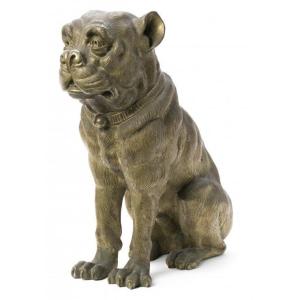


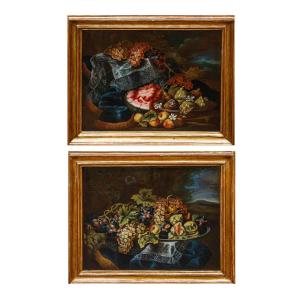
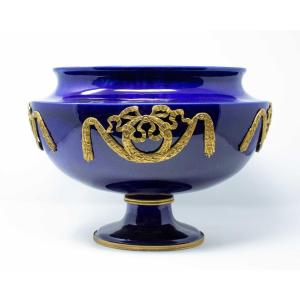
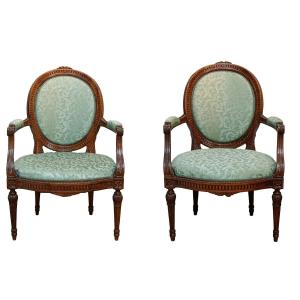


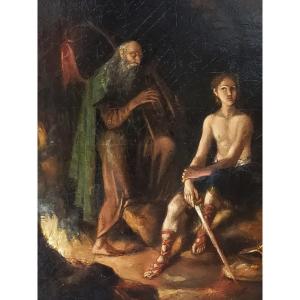
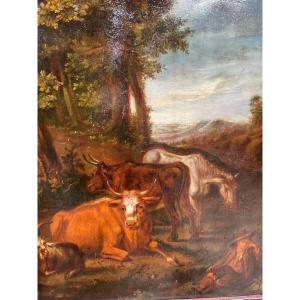
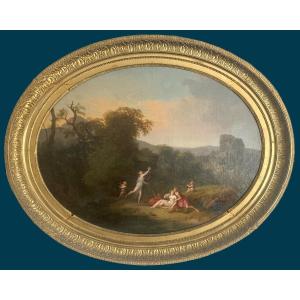

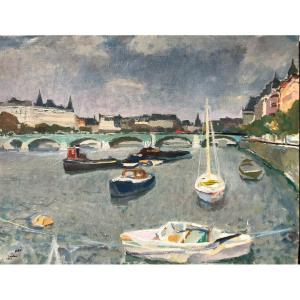



 Le Magazine de PROANTIC
Le Magazine de PROANTIC TRÉSORS Magazine
TRÉSORS Magazine Rivista Artiquariato
Rivista Artiquariato